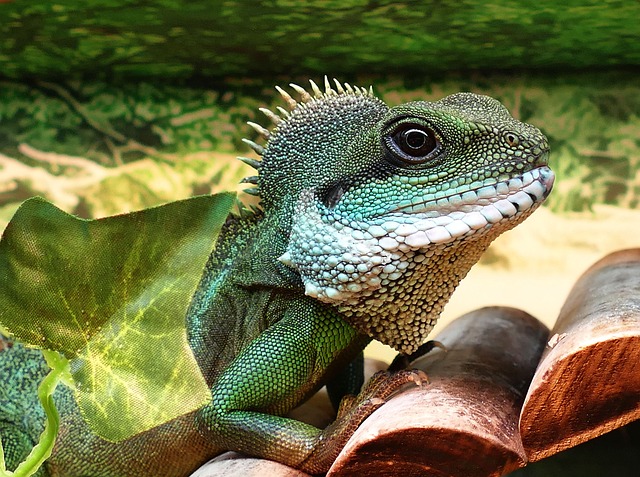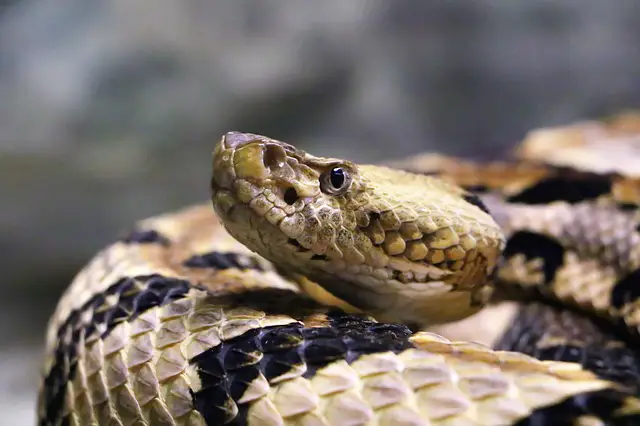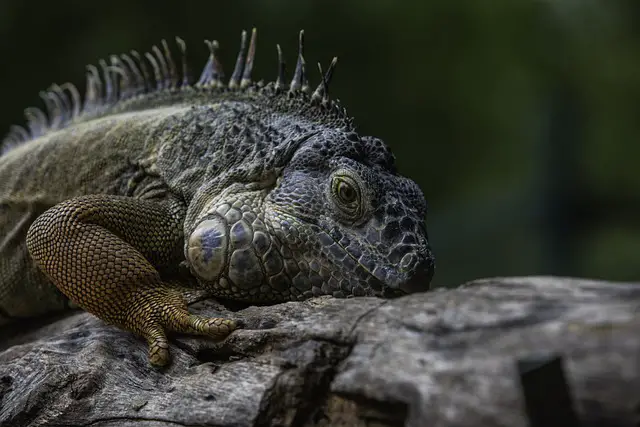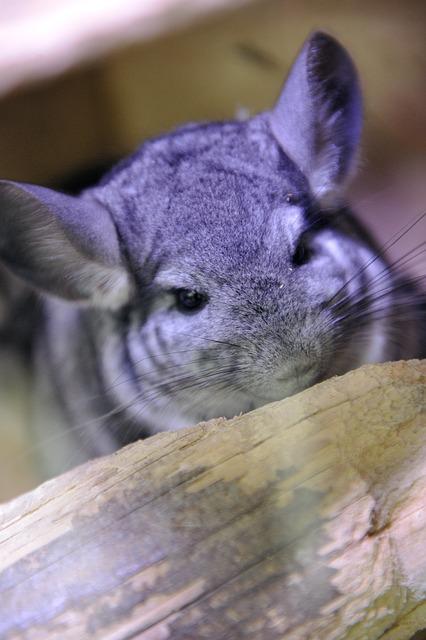Chinese water dragons are fascinating pets that require a lot of attention and care. They are known for their active and playful nature, but what should you do if your dragon sleeps more than usual?
It is essential to understand that while it is normal for Chinese water dragons to sleep for long periods, excessive sleeping can indicate an underlying health issue.
One possible reason for excessive sleeping in Chinese water dragons is stress. Dragons kept in small enclosures or insufficient stimulation may become stressed and lethargic.
Another possible cause of excessive sleeping is a lack of proper lighting or heating in the dragon’s enclosure. Chinese water dragons require specific temperatures and lighting conditions to thrive, and a lack of either can result in lethargy and excessive sleep.
Understanding Chinese Water Dragon Behavior
Chinese water dragons are fascinating reptiles that are known for their unique behaviors. However, it is common for new owners to be concerned about their pet’s sleeping habits. Understanding Chinese water dragon behavior is essential to determine if your pet is healthy and happy.
Active and Lethargic Behavior
Chinese water dragons are active during the day and sleep at night. They are diurnal reptiles, which means they are most active during the day.
However, they may take naps during the day as well. If a Chinese water dragon is lethargic during the day and not moving much, it may indicate an underlying health issue.
Handling
Chinese water dragons are not known to be affectionate pets. They are not fond of being handled and may become agitated or stressed if handled too much. Handling them gently and carefully is essential to avoid any injuries.
Sleeping Habits
Chinese water dragons may sleep up to 12 hours a day. It is usual for them to sleep during the day or even sleep for extended periods.
However, if your Chinese water dragon is sleeping excessively and not eating or drinking, it may indicate an underlying health issue.
In conclusion, understanding Chinese water dragon behavior is essential to ensure your pet is healthy and happy. It is usual for them to sleep during the day and take naps.
However, if your Chinese water dragon is lethargic or sleeping excessively, it may indicate an underlying health issue.
Why Is My Chinese Water Dragon Sleeping So Much
Chinese water dragons are known to be active and energetic reptiles, but if you notice that your water dragon is sleeping more than usual, it could be a sign of an underlying issue.
This section explores common reasons why your Chinese water dragon may sleep so much.
Lack of Energy
One of the most common reasons Chinese water dragons sleep more than usual is a lack of energy. Various factors, such as a poor diet, dehydration, or a lack of sunlight, could cause this.
It’s essential to ensure that your water dragon receives a balanced diet with plenty of protein, calcium, and vitamins.
Additionally, ensure that your water dragon has access to plenty of clean water and receives adequate exposure to UVB light.
Illness or Infection
If your Chinese water dragon is sleeping more than usual and exhibiting other symptoms such as lethargy or loss of appetite, it could be a sign of an illness or infection.
Common illnesses that can affect water dragons include respiratory infections and parasites. If you suspect your water dragon may be sick, it’s essential to take them to a veterinarian specializing in reptile care.
Aging
As Chinese water dragons age, they may naturally begin to sleep more than they did when they were younger. This is a normal part of the aging process. Still, monitoring your water dragon’s behavior is essential to ensure they are not exhibiting any other signs of illness or discomfort.
In conclusion, if your Chinese water dragon sleeps more than usual, it’s essential to investigate the underlying cause.
Ensuring that your water dragon receives a balanced diet, adequate hydration, and proper exposure to sunlight can help keep them healthy and active.
If you suspect that your water dragon may be sick or suffering from an infection, it’s essential to seek veterinary care as soon as possible.
Chinese Water Dragon’s Diet and Eating Habits
Chinese water dragons are omnivorous, which means they eat plant- and animal-based food. They feed on insects, small fish, and crustaceans in the wild. However, they can be fed various foods that meet their nutritional requirements in captivity.
It’s important to note that a Chinese water dragon’s diet changes as they age. Juvenile dragons require more protein and calcium, while adult dragons require more vegetables and fruits.
A balanced diet for an adult dragon should consist of 75% vegetables and fruits and 25% protein.
Some common vegetables and fruits that can be included in their diet are collard greens, kale, mustard greens, green beans, carrots, squash, and berries.
It’s best to avoid feeding them citrus fruits and iceberg lettuce as they can cause health problems.
Protein can be provided by feeding crickets, mealworms, waxworms, and pinkie mice. It’s essential to ensure that the prey items are appropriately sized for the dragon and are gut-loaded (fed with nutritious food) before feeding.
Chinese water dragons have a good appetite, but it’s not uncommon for them to go through decreased appetite. This can be due to stress, illness, or environmental changes. If a dragon stops eating for an extended period, it’s best to consult a veterinarian to rule out any health issues.
In conclusion, providing a balanced diet that meets their nutritional requirements is crucial for the health and well-being of Chinese water dragons. Owners should monitor their dragon’s eating habits and adjust their diet accordingly to ensure they are receiving proper nutrition.
Habitat and Enclosure Requirements
Chinese water dragons require a spacious and well-equipped enclosure to thrive. The enclosure should be large enough to provide ample space for the water dragon to move around and climb.
A minimum enclosure size of 4 feet long, 2 feet wide, and 3 feet tall is recommended for a single adult water dragon.
The enclosure should be made of a sturdy material that can withstand the water dragon’s climbing and digging behavior.
Glass terrariums or PVC cages are popular water dragon enclosures. The enclosure should also have a secure lid to prevent escapes.
It is essential to provide a variety of branches and other climbing structures in the enclosure, as water dragons are arboreal animals.
The branches should be sturdy enough to support the water dragon’s weight and placed at different heights and angles to provide various climbing options.
The substrate in the enclosure should be a mix of soil, sand, and bark to mimic the water dragon’s natural environment. This substrate should be deep enough to allow digging and kept moist to maintain humidity levels.
A basking spot should be provided in the enclosure, with a basking area temperature of around 90-95°F. A cooler area should also be provided, with a temperature range of 75-85°F.
The enclosure should also have a hide for the water dragon to retreat when it wants privacy.
Humidity levels in the enclosure should be kept between 60-80%. This can be achieved by regularly misting the enclosure and providing a water source for the dragon to soak in.
The water in the enclosure should be changed regularly and kept at a temperature range of 75-80°F. A water filter can be used to help maintain water quality.
Temperature and Lighting Needs
Chinese water dragons are cold-blooded reptiles, which means their environment regulates their body temperature. It is crucial to ensure that their enclosure provides a suitable temperature gradient for them to regulate their body temperature effectively.
The ideal temperature range for Chinese water dragons is between 75-85°F (24-29°C) during the day and 65-75°F (18-24°C) at night.
A heat source, such as a basking bulb or ceramic heat emitter, should be provided at one end of the enclosure. This will create a temperature gradient, allowing the water dragon to move between warmer and cooler areas as needed.
It is also essential to provide adequate lighting for Chinese water dragons. UVB lighting is necessary for synthesizing vitamin D3, essential for calcium metabolism and overall health. The UVB bulb should be replaced every 6-12 months as the output decreases.
When selecting a bulb, it is important to consider the distance between the bulb and the basking spot. Different bulbs have different heat outputs, and the distance will affect the temperature at the basking spot. A thermometer should monitor the temperature regularly and ensure it remains within the appropriate range.
In summary, providing adequate temperature and lighting is crucial for the health and well-being of Chinese water dragons. A suitable temperature gradient should be created using a heat source, and UVB lighting should be provided to ensure proper calcium metabolism.
Regular monitoring of temperature and lighting is essential to maintain a healthy environment for the water dragon.
Health Concerns and Diseases in Chinese Water Dragons
Chinese water dragons are susceptible to health concerns and diseases like any living creature. Pet owners must know these issues to properly care for their pets and seek veterinary attention when necessary.
Stress can be a significant factor in the health of Chinese water dragons. These animals can become stressed from environmental changes, improper handling, or illness.
Stress can weaken their immune system, making them more susceptible to infections and diseases.
Infections, particularly skin infections, are common in Chinese water dragons. Bacteria or parasites can cause these infections and can result in symptoms such as swelling, redness, and discharge. Mouth rot is another common infection that can occur in Chinese water dragons.
This bacterial infection affects the mouth and can lead to difficulty eating and breathing.
Dehydration is another concern for Chinese water dragons. These animals require a humid environment and access to water to stay hydrated. Weight loss can occur if they are not getting enough water or are suffering from a respiratory infection.
Metabolic bone disease is a severe concern for Chinese water dragons. This disease is caused by a lack of calcium and vitamin D3 in their diet, resulting in weakened bones, muscle tremors, and difficulty walking.
Dystocia, or egg binding, can occur in female Chinese water dragons. This is when an egg becomes stuck in the reproductive tract, resulting in lethargy, loss of appetite, and difficulty laying eggs.
If a pet owner suspects their Chinese water dragon is sick, seeking veterinary attention as soon as possible is essential. A veterinarian can diagnose and treat health concerns or diseases affecting the animal.
Chinese Water Dragon Care
Chinese water dragons are fascinating reptiles that require proper care to thrive in captivity. Here are a few tips to keep your pet healthy and happy:
Habitat
Chinese water dragons need a large enclosure with plenty of space to climb, swim, and bask. A 55-gallon tank or larger is recommended for one adult dragon.
The enclosure should have a basking spot with a temperature of 90-95°F and a cooler area of 75-80°F. A UVB light is also necessary to provide your dragon with vitamin D3 for proper calcium absorption.
Substrate
A substrate of soil or mulch is recommended to allow your dragon to dig and burrow. Avoid using sand or gravel, as these can cause impaction if ingested.
Handling
Chinese water dragons are not typically handled often, as they can become stressed and may bite or scratch. If you need to handle your dragon, approach it slowly and gently. Support its body and avoid grabbing its tail, which can detach if the dragon feels threatened.
Misting
Chinese water dragons require high humidity levels, so misting the enclosure daily is essential. You can also provide a water dish for your dragon to soak in.
Shedding
As with all reptiles, shedding is natural for Chinese water dragons. You can help your dragon by providing a humid hide, a small enclosed area with damp substrate. This will help the dragon shed its skin more easily.
Diet
Chinese water dragons are omnivores and require a balanced diet of insects, vegetables, and fruits. Crickets, mealworms, and waxworms are good protein sources, while leafy greens, carrots, and squash provide vitamins and minerals.
Calcium and multivitamin supplements should also be provided to ensure your dragon gets all the nutrients it needs.
Following these tips, you can provide your Chinese water dragon the care it needs to thrive in captivity.
Chinese Water Dragon Mating and Reproduction
Chinese water dragons reach sexual maturity at around 2-3 years of age. Males are typically larger than females and have a more prominent head and broader tail base. During mating season, males may become territorial and aggressive towards other males.
Mating typically occurs in the spring and summer months. The male will approach the female and bob his head up and down while displaying his dewlap (throat flap). If the female is receptive, she will allow the male to mount her and copulate.
Females can lay up to 20 eggs per clutch, typically in a burrow or hole in the ground. The eggs will incubate for approximately 75-85 days before hatching.
It is important to note that not all females will lay eggs every year, and egg binding (when an egg becomes stuck in the female’s reproductive tract) can be a severe and potentially life-threatening issue.
Proper nutrition and environmental conditions are essential for successful mating and reproduction in Chinese water dragons. Females require a sufficient calcium intake to produce healthy eggs, and a suitable nesting site is necessary for successful incubation.
Regarding growth, hatchlings can measure anywhere from 4-7 inches in length. They increase and reach up to 3 feet long within their first year. Providing adequate space and proper husbandry is essential to ensure healthy growth and development.









